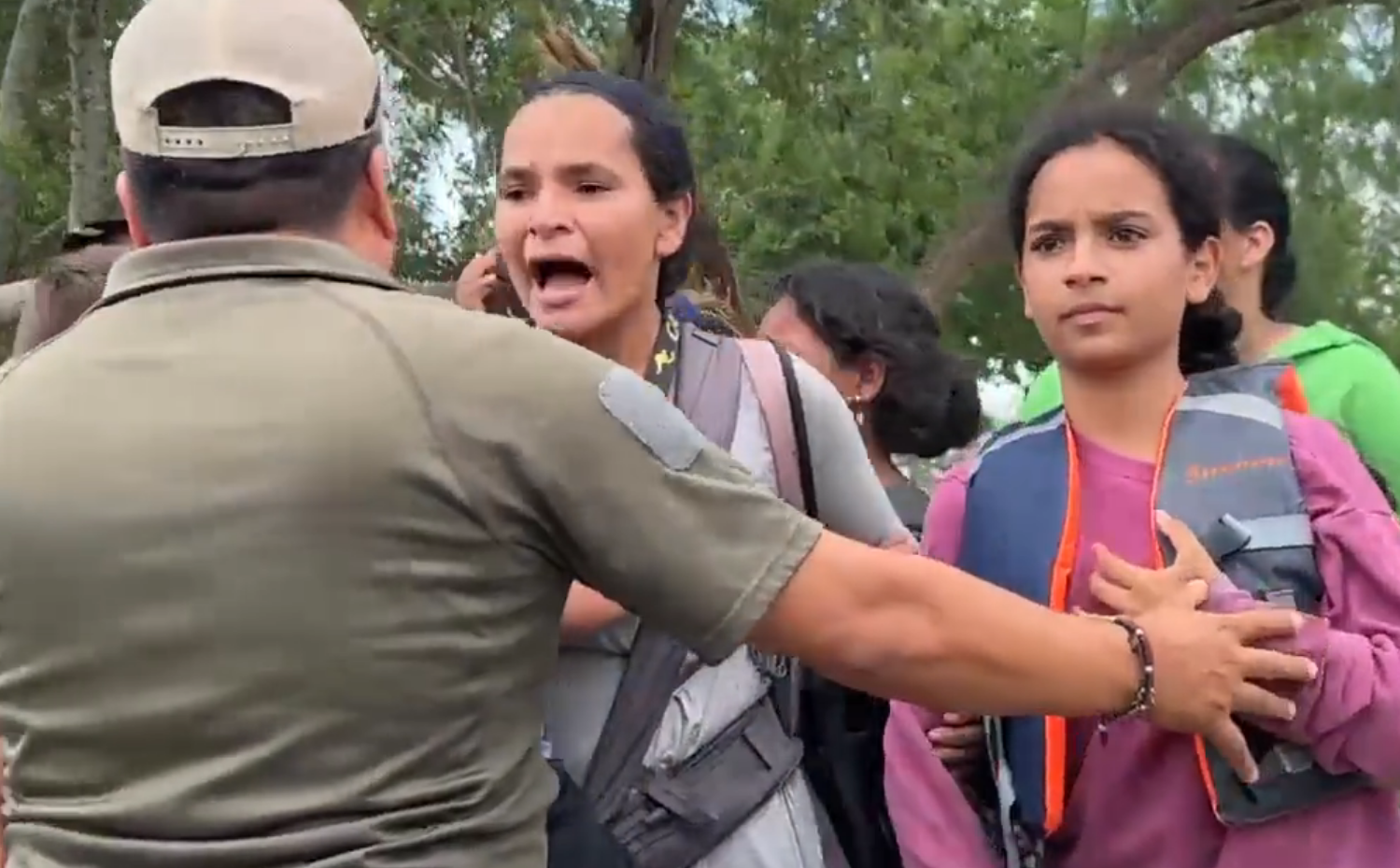Blinken & Mayorkas Meet with Mexican President on Border Issues
U.S. Secretary of State Antony Blinken and DHS Secretary Alejandro Mayorkas are meeting with Mexican President Andres Manuel Lopez Obrador (popularly known as “AMLO”) in Mexico City this week for what the Wall Street Journal describes as “urgent talks to slow the record pace of illegal crossings at the U.S. southern border”. I certainly appreciate the sense of urgency, but Blinken and Mayorkas are a couple of years late in this effort, suggesting that politics, not border security, is what’s really motivating the Biden administration. Why now? Look no further than ongoing Senate border negotiations, bad polling numbers for the president, and an internecine Democratic battle playing out on the pages of the New York Times.
Trump’s Diplomatic Efforts
Unlike President Biden, then-President Donald Trump was not afraid to use American diplomatic and economic might to force the Mexican government to tighten up its own border-security efforts in order to slow the flow of “other than Mexican” (OTM) migrants to the United States.
For instance, Mexican assistance—voluntary and otherwise—was key to the Trump administration’s Migrant Protection Protocols (MPP), better known as “Remain in Mexico”. Under MPP, certain OTMs seeking asylum were sent back across the border to await their asylum hearings, which removed the main incentives—the ability to live and work here indefinitely—for illegal migrants with weak or bogus claims.
As then-DHS Secretary Kirstjen Nielsen explained in announcing the implementation of Remain in Mexico in December 2018:
Let me be clear: we will undertake these steps consistent with all domestic and international legal obligations, including our humanitarian commitments. We have notified the Mexican government of our intended actions. In response, Mexico has made an independent determination that they will commit to implement essential measures on their side of the border. We expect affected migrants will receive humanitarian visas to stay on Mexican soil, the ability to apply for work, and other protections while they await a U.S. legal determination. [Emphasis added.]
“Independent determinations” were at play to be sure, but it’s not clear that Mexico City had much choice in the matter, either. The United States receives more than three-quarters of Mexico’s exports, and is responsible for more than a half of its foreign investments.
Thereafter, in June 2019, the United States and Mexico announced a joint “Agreement on Migration”. As the State Department explained:
Mexico will take unprecedented steps to increase enforcement to curb irregular migration, to include the deployment of its National Guard throughout Mexico, giving priority to its southern border. Mexico is also taking decisive action to dismantle human smuggling and trafficking organizations as well as their illicit financial and transportation networks. Additionally, the United States and Mexico commit to strengthen bilateral cooperation, including information sharing and coordinated actions to better protect and secure our common border.
That agreement came to fruition after Trump threatened to impose tariffs on Mexican imports to the United States, as even the White House admitted.
Under that agreement, Mexico sent 6,000 of its (then-recently formed) National Guard troops to Mexico’s southern border with Guatemala to block the migration of OTMs.
Even prior to that agreement, however, the Mexican government had begun beefing up its system for granting asylum. Asylum applications in the country jumped from fewer than 1,300 in FY 2014 to more than 14,000 in FY 2017 to 118,000 in FY 2022. The majority of asylum applicants in Mexico come from Honduras, Cuba, Haiti, and Venezuela, but African and Asian nationals have also sought asylum in the country.
And Then Came Biden
The Biden administration took a much softer tone with Mexico City, and the results were more or less what you would have expected.
The number of illegal entrants apprehended by Border Patrol at the Southwest border who were OTMs—and also not from the Northern Triangle countries of El Salvador, Guatemala, and Honduras (“other than Northern Triangle”, or “ONTs”)—increased nearly twelvefold, from just over 85,000 in FY 2019 to 1.019 million in FY 2023.
Nothing suggested that the Mexican government was facilitating migrants’ transit through the country, but if the U.S. administration wasn’t serious about the flow, how forceful could you expect AMLO’s response to be?
Then in May, my colleague Todd Bensman reported that Mexican migration officials were coordinating with CBP to manage migrants’ illegal entry into the United States. As he explained:
Controlled-flow by the Biden administration’s DHS with Mexico also constitutes a highly unusual U.S. policy that demonstrates formal acquiescence to illegal immigration and an official willingness to accommodate mass illegal immigration rather than stopping, blocking, or deterring it, as required by law.
In January 2023, President Biden went to Mexico City for trilateral talks with AMLO and Canadian Prime Minister Justin Trudeau, and AMLO praised Biden for being “the first president of the United States in a very long time that has not built even one meter of wall”.
At the time, Biden remarked: “We’re working together to address this [migration] challenge in a way that upholds our nations’ laws and protects the human rights of migrants escaping desperate circumstances . . . my Republican friends in Congress should join us in solutions.”
Biden’s “Republican Friends”
That statement has not aged well, because Blinken’s and Mayorkas’ meeting with AMLO likely has more to do with demands from Biden’s “Republican friends” in the Senate that the administration secure the border than it does with any newfound White House interests in the matter, as the Journal explains:
In Washington, the border crisis has become a major obstacle for continued U.S. military support for Ukraine, a priority of President Biden. [Senate] Republicans are demanding changes to the Biden administration’s border policy as a condition for backing a $110.5 billion national-security package that would fund aid for Ukraine, Israel and Taiwan, as well as replenish U.S. weapons stocks.
In recent weeks the White House has agreed to make concessions to Republicans’ demands on issues including raising the bar for asylum requests. Some of the proposed measures to tighten border security and send back more deportees would require Mexico’s support.
Of course, it’s not only cash for Ukraine, Israel, and Taiwan that’s driving this interestingly timed parley. The disaster that is the Southwest border has become a major political liability for the president and his fellow Democrats heading into the 2024 general elections, and Biden isn’t just taking heat on the issue from his Republican friends.
“Chaos, Fury, Mistakes”
Eagle Pass, Texas, has become a major illicit crossing point, and in September the town’s Democratic Mayor Rolando Salinas declared a state of emergency. As he complained at the time, “what’s disappointing is that you have all of these thousands of people just walking in, without any consequence whatsoever”.
The New York Times—hardly a conservative outlet—ran an article this week headlined “Chaos, Fury, Mistakes: 600 Days Inside New York’s Migrant Crisis”. The Times was highly critical of New York City Mayor Eric Adams’ (D) response to a surge of Southwest border migrants into the city, 72,000 of whom had passed through NYC’s already strained shelter system (at a cost of $12,000 per family per month).
The Times quoted Ingrid Lewis-Martin, the mayor’s chief adviser, who attempted to deflect the blame away from her boss: “We are a municipality doing the federal government’s job . . . They need to do their jobs.”
Normally, not much happens diplomatically between Christmas and New Years, but the Southwest border hasn’t been normal since Joe Biden took office. If you’re wondering why the U.S. secretary of State and DHS secretary are in Mexico City two days after Christmas, begging the Mexican president for assistance, look no further than the ongoing border negotiations in the Senate, the latest immigration polling, and the internecine Democratic battles playing out on the pages of the New York Times.






